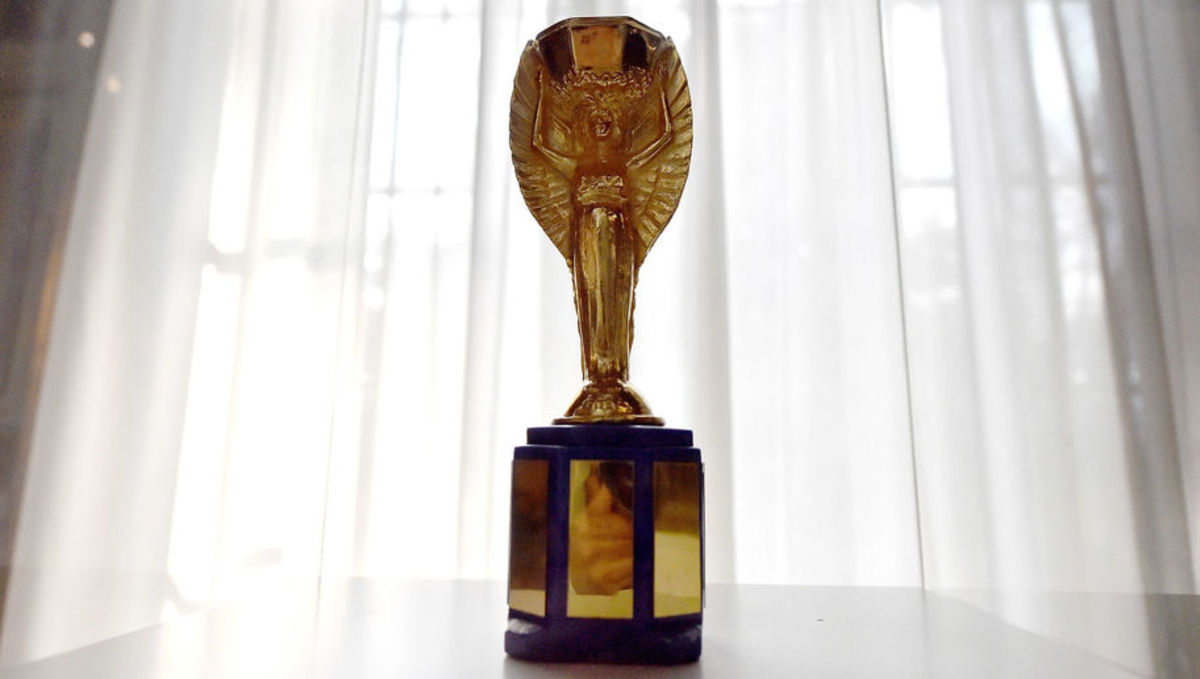World Cup Countdown: 20 Weeks to Go - Where it All Started, the Story of Uruguay's 1930 Victory

Ninety years ago, FIFA made the ground-breaking decision to hold their first major football tournament: the World Cup. FIFA President Jules Rimet elected Uruguay as the host country for the World Cup that would take place two years later in 1930.
The choice was obvious; Uruguay had recently become two-time world champions due to their Olympic victories, and would be celebrating their hundredth year as an independent country in 1930. Rimet's masterplan aimed to celebrate football as a sport with the potential to be the greatest on earth, a spectacle for everyone.
However, the cracks started to appear in Rimet's dream when no European country pledged to send a team across the Atlantic until two months before the tournament was due to start.
Rimet eventually persuaded teams from France, Belgium, Romania and Yugoslavia to make the trip to South America. They were joined by nine other teams from both North and South America, making the 1930 World Cup a tournament of thirteen teams.
Obviously, as thirteen is an odd number, the size of the groups differed. Group one, the only group to have four teams, contained Argentina, Chile, France and Mexico. Group two involved future five-time World Cup winners Brazil, alongside Bolivia and Yugoslavia. Group three contained hosts Uruguay, Peru and Romania, while the final group was made up by the United States, Paraguay and Belgium.
The first two fixtures were played simultaneously, with France beating Mexico 4-1 and the United States beating Belgium 3-0. The first goal ever recorded in the World Cup was scored by Lucien Laurent of France, and just four days later the first ever World Cup hat-trick had been scored by the United States' Bert Patenaude in the Americans' 3-0 drubbing of Paraguay.
The four teams to progress from their respective groups were Argentina, Yugoslavia, Uruguay and the United States. All four countries boasted a remarkable 100% record at this stage, so the semi-finals really were anyone's game.
Following their progression to the semi-finals, hosts Uruguay were drawn against the only European country still left in the tournament: Yugoslavia. In the other tie, Argentina were drawn against the United States, a match between the two countries with the joint-best goal difference in the competition.
In the first semi-final, Argentina hammered the United States 6-1, and had subsequently reached the first ever FIFA World Cup final. To prove their own strength and desire to win the inaugural tournament, a day later Uruguay beat Yugoslavia 6-1; a result which made the first World Cup final an all South American affair.
In front of 69,000 raucous fans in Montevideo, Uruguay beat Argentina 4-2 after trailing 2-1 at half time, and became the first ever winners of the FIFA World Cup.
Uruguay won the trophy in their own country, and hold the historic title of being the first country to ever get their hands on the prestigious Jules Rimet trophy.
Jules Rimet's visionary approach to football helped to create the World Cup we know and love today. His determination to elevate the sport to a higher platform has produced the greatest spectacle in the world, and the World Cup of 1930 was a historic tournament whereby the true power of Uruguayan football was seen. Following their Olympic victories, the pressure was on the hosts to perform, and they did just that.
Without doubt, 1930 World Cup was the beginning of a new era for international football, and the beginning of the game's modern era.






